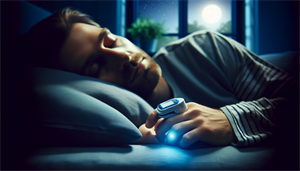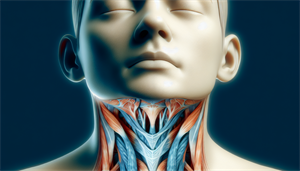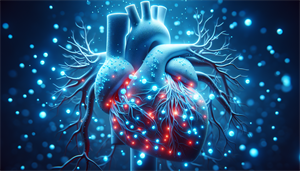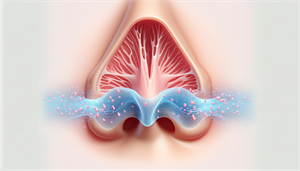Sleep apnea, known for its loud snores and restless nights, significantly impacts daytime health, including causing low oxygen levels during the day. This condition disrupts the restorative nature of sleep, leading to daytime fatigue, headaches, and shortness of breath.
This article explores the science behind sleep apnea's effect on daytime oxygen levels, its consequences, and discusses diagnosis, treatment options, and management tips for those affected by this often overlooked aspect of the disorder.
Key Takeaways
-
Sleep Apnea, particularly Obstructive Sleep Apnea (OSA), can cause airway blockage during sleep, leading to interruptions in breathing and reduced daytime blood oxygen saturation levels below the normal range, which starts at 90% saturation.
-
Low blood oxygen levels, or hypoxemia, resulting from sleep apnea episodes, can lead to serious daytime symptoms and health issues, including fatigue, headaches, confusion, and potentially severe consequences for vital organs like the brain and heart.
-
Management of sleep apnea is crucial to maintain proper daytime oxygen levels and involves an array of strategies including diagnosis via sleep studies, treatments such as CPAP therapy, oral appliances, surgery, lifestyle changes, and regular follow-up for assessment and treatment efficacy.
Exploring the Link Between Sleep Apnea and Daytime Oxygen Saturation

The connection between obstructive sleep apnea (OSA) and daytime oxygen levels might seem straightforward at first glance: if you have OSA, your airway collapses while you sleep, causing interruptions in your breathing which results in low oxygen levels in your blood. However, the story doesn’t end when you wake up. The implications of OSA span beyond the night, influencing your oxygen saturation during the daytime as well.
The severity of OSA significantly influences this relationship. As the apnea becomes more severe, the drop in daytime oxygen levels, or PaO2, intensifies. In essence, if you suffer from severe sleep apnea, you are more likely to experience lower daytime oxygen levels. But how do we measure these levels? And what does a day in the life of an individual with sleep apnea look like?
Understanding Blood Oxygen Levels
Deciphering blood oxygen levels is similar to solving an important part of the sleep apnea puzzle. In a healthy individual, blood oxygen levels during sleep are generally above 90% saturation. When these levels fall below 90%, it’s considered abnormal and potentially concerning. This might occur due to the interruptions in breathing caused by sleep apnea, leading to less oxygen reaching your lungs and subsequently affecting your blood oxygen level.
Many factors can contribute to variations in the normal range of blood oxygen levels. Heart conditions, lung conditions such as asthma, emphysema, chronic obstructive pulmonary disease (COPD), and other specific lung diseases can all influence these levels. For individuals with sleep apnea, these variations are a stark reality they have to live with.
But what happens when the night ends and a new day begins?
The Night-to-Day Transition
As dawn breaks, your body undergoes a sort of struggle. After a night of combating low oxygen levels resulting from sleep apnea, the body works to restore balance and maintain normal oxygen levels during the day. This isn’t always a smooth journey. If your breathing slows or stops due to sleep apnea, this leads to a decrease in oxygen intake causing temporary drops in blood oxygen levels. As breathing normalizes and oxygen intake increases, these levels usually rise again during the day.
However, sleep apnea isn’t the only factor influencing this daily transition. Various respiratory disorders and individual health conditions can also impact oxygen saturation levels during the transition from night to day. The complexity of this process underscores the physiological toll sleep apnea can have, a toll that becomes clearer when we delve into the physiology of sleep apnea itself.
The Physiology of Sleep Apnea and Oxygen Desaturation

Sleep apnea, a type of sleep disordered breathing, is a chronic condition characterized by the cessation of breathing for periods of 10-30 seconds during sleep. While this may not sound too alarming at first, its consequences are far-reaching. The main culprits behind sleep apnea are the physical obstructions that occur in the airway, disrupting normal breathing patterns and often resulting in loud snoring.
Obstructive sleep apnea (OSA), a specific form of sleep apnea, occurs when relaxed throat muscles and soft tissues cause the airway to collapse, hindering normal breathing in obstructive sleep apnea patients. This obstruction results in an “apnea event,” a cessation of airflow for at least 10 seconds. During these events, there’s a decrease in the oxygen level in the blood, a condition known as oxygen desaturation.
Obstructive Sleep Apnea (OSA) and Airway Blockage
OSA is a condition that occurs when the upper airway muscles and soft tissue structures relax during sleep, which leads to airway blockage and temporary cessation of breathing until the individual awakens. The relaxation of these throat muscles leads to the blockage of the airway during sleep, causing a domino effect of health concerns.
An OSA episode is characterized by the narrowing or closing of the airway during respiration, leading to diminished air intake and a decrease in blood oxygen levels. This lack of air prompts the brain to briefly arouse the individual to reopen the airway. While this might seem like an efficient response, it can lead to fragmented sleep and other health issues.
Central Sleep Apnea and Respiratory Control
Central sleep apnea (CSA) is another form of sleep apnea where the brain and nervous system do not effectively communicate with the muscles that regulate breathing during sleep. CSA involves a deficiency of signals from the brain to the respiratory muscles, leading to periods of shallow and deep breaths interspersed with prolonged pauses.
The implications of the brain’s inability to transmit accurate signals to the respiratory muscles in CSA can lead to disrupted breathing patterns during sleep and potentially decreased oxygen levels. This highlights the complex physiological mechanisms at play in both forms of sleep apnea and their impact on oxygen desaturation.
Consequences of Low Blood Oxygen Levels

Low blood oxygen levels can have extensive consequences and various manifestations. Daytime symptoms associated with low blood oxygen levels can include:
-
Fatigue
-
Shortness of breath
-
Headache
-
Difficulty breathing
-
Rapid heart rate
-
Bluish skin
-
Coughing
-
Wheezing
-
Anxiety
In addition to these symptoms, daytime hypoxemia can manifest as:
-
Confusion
-
Elevated heart rate
-
Coughing or wheezing
-
Changes in skin color, such as a bluish tint
All of these indicate the body’s challenge in delivering sufficient oxygen. Sustained low blood oxygen levels, also referred to as hypoxemia, can have detrimental effects on the heart, including the development of high blood pressure. This is a critical condition that, if not promptly and effectively addressed, can lead to fatal outcomes.
Impact on Vital Organs
Low blood oxygen saturation can result in:
-
compromised recovery
-
impact on cognitive abilities such as memory and attention
-
severe brain damage and potential fatality due to prolonged deprivation of oxygen to brain cells
-
damage to the liver
The low oxygen levels resulting from sleep apnea can contribute to liver damage by inducing hypoxia, a state in which the liver experiences insufficient oxygen supply. This can lead to the onset of non-alcoholic fatty liver disease (NAFLD) and other complications related to the liver.
Symptoms of Daytime Hypoxemia
Daytime hypoxemia can have a detrimental effect on cognitive functions, potentially impairing mechanisms of attention, learning and memory, processing speed, and executive function. But it’s not just cognitive functions that are impacted. Physical symptoms such as headaches, difficulty in breathing, rapid heart rate, and a bluish tint to the skin can also occur.
These symptoms can be alarmingly disruptive to daily life. Imagine feeling:
-
severe fatigue
-
drowsiness
-
difficulty concentrating
-
unexpectedly falling asleep during daytime activities such as working, watching TV, or driving
These are the struggles that individuals with sleep apnea and low daytime oxygen levels have to grapple with.
Diagnosing Sleep Apnea and Monitoring Oxygen Levels

Identifying sleep apnea and keeping track of oxygen levels is a key step in its management. OSA is usually diagnosed through an overnight sleep study using polysomnography, which involves measuring blood oxygen levels with a pulse oximeter.
This study assesses factors such as:
-
breathing
-
oxygen saturation levels
-
heart rate
-
brain waves
to determine if there’s a significant drop in blood oxygen levels during sleep. A home sleep test is also an option, providing a more convenient and comfortable way for individuals to have their sleep patterns monitored.
Home Sleep Test and Pulse Oximetry
The components of a home sleep test typically involve obtaining the monitoring equipment from a medical professional, conducting the test at home independently, and then returning the equipment for result analysis. During the test, blood oxygen levels are measured using a pulse oximeter, a device that monitors oxygen saturation.
Home sleep tests offer valuable data for the diagnosis of sleep apnea. They provide insights into:
-
Your sleep patterns
-
Your breathing
-
Your respiratory and heart rate
-
Air flow
-
Oxygen saturation
All these elements contribute to a comprehensive understanding of your sleep health.
Role of a Sleep Medicine Specialist
A sleep medicine specialist is instrumental in identifying and treating sleep disorders, including sleep apnea. They analyze findings from home sleep tests and pulse oximetry to diagnose sleep apnea and assess blood oxygen levels. The specialist also plays a crucial role in managing oxygen level issues by evaluating CPAP acceptability and compliance, engaging the patient support team, and evaluating potential treatments like positive airway pressure or supplemental oxygen. The importance of their role underscores the necessity of regular follow-ups, as we’ll discuss in the next section.
Treatment Strategies to Improve Oxygen Levels
Multiple treatment strategies exist to enhance oxygen levels in those with sleep apnea. These include oral appliance therapy, surgical options, and the use of supplemental oxygen. Each of these approaches offers a unique way to manage sleep apnea and improve oxygen saturation levels.
Oral appliance therapy, for instance, works by advancing the lower jaw and tongue forward using mandibular advancement devices, thereby opening up the airway and preventing airway collapse. This leads to an increase in oxygen saturation levels during sleep. Surgical interventions, such as tongue-reduction procedures and tracheostomy, expand the airway passage, leading to enhanced oxygen saturation and a reduction in apnea and oxygen desaturation indices.
Oral Appliance Therapy
Oral appliance therapy serves as an alternative treatment for obstructive sleep apnea (OSA), utilizing dental devices like mandibular advancement devices (MADs) to alleviate physical blockages in the upper airway. By decreasing the occurrence of paused breathing events, these devices can enhance oxygen saturation in the blood.
Oral appliance therapy can effectively enhance oxygen saturation levels in individuals with sleep apnea, especially in cases where CPAP treatment adherence is low or when the condition is mild to moderate. However, potential adverse effects or discomforts related to oral appliance therapy for sleep apnea include:
-
drooling
-
temporomandibular disturbances
-
excess salivation or mouth dryness
-
mucosal dryness
-
tooth discomfort
-
hypersalivation
-
intellectual impairment
-
night sweats
-
sexual dysfunction
-
headaches
-
jaw pain
-
permanent changes to the bite.
Surgical Options and Supplemental Oxygen
Surgical interventions for sleep apnea aim to prevent tissues from collapsing and blocking the airway during sleep. Some common procedures include:
-
Tonsillectomy
-
Uvulopalatopharyngoplasty (UPPP)
-
Tongue-reduction procedures (such as radiofrequency ablation and reduction glossectomy)
-
Radiofrequency volumetric tissue reduction
-
Maxillomandibular advancement
-
Upper airway stimulation therapy
These procedures can significantly improve disease severity, reduce symptoms, and potentially cure a considerable percentage of patients.
In addition to these surgical options, supplemental oxygen is provided to individuals with sleep apnea who struggle to tolerate or adhere to CPAP therapy. Its purpose is to mitigate tissue hypoxia and enhance overall oxygen levels during sleep.
Managing Sleep Apnea to Protect Daytime Oxygen Levels
Protection of daytime oxygen levels involves a comprehensive approach to managing sleep apnea. It involves not only medical interventions but also lifestyle changes and regular follow-ups with healthcare professionals.
Nasal steroids and sleep positioning devices can aid in managing sleep apnea, while continuous positive airway pressure (CPAP) therapy is widely regarded as the most effective treatment for obstructive sleep apnea in adults.
Lifestyle Changes and Their Benefits
Implementing lifestyle changes like losing weight and discontinuing smoking can markedly enhance sleep apnea symptoms and oxygen saturation levels. Research has demonstrated that weight loss can lead to improvements in sleep apnea and higher levels of oxygen saturation. Additionally, ceasing smoking can diminish the severity of sleep apnea symptoms and enhance the flow of oxygen through the lungs, thereby improving brain oxygenation.
Adjusting sleep positions can also have a substantial impact on sleep apnea patients. Those who sleep on their side often experience an improvement in sleep apnea symptoms and a decrease in the occurrence of breathing pauses and the decline in oxygen levels.
Importance of Regular Follow-Up
Consistent follow-up is essential in the management of sleep apnea and the maintenance of ideal daytime oxygen levels. It allows for the assessment of complications associated with OSA and monitoring the effectiveness of treatment. Follow-up visits for sleep apnea should be scheduled at least once after CPAP treatment is first initiated and at least annually thereafter.
During these visits, assessments including overnight monitoring of breathing and other body functions during sleep are conducted. These not only monitor progress but also evaluate whether sleep apnea has been impacted by factors such as weight loss or gain.
Summary
Sleep apnea is a condition that significantly impacts daytime oxygen levels, with potential consequences on both physical and mental wellbeing. Understanding the relationship between sleep apnea and oxygen saturation, recognizing the symptoms, seeking diagnosis, and exploring treatment options are all crucial steps in managing this condition.
Whether it’s through oral appliance therapy, surgical procedures, or lifestyle changes, there are numerous ways to improve oxygen levels and manage sleep apnea. Regular follow-up with a sleep medicine specialist can ensure you’re on the right track and help you maintain optimal daytime oxygen saturation. Remember, sleep is not just about rest; it’s about rejuvenation for your body’s vital processes, including maintaining proper oxygen levels.
Frequently Asked Questions
Can sleep apnoea affect your breathing during the day?
Yes, sleep apnoea can affect your breathing during the day by causing breathing difficulties while awake, leading to an increase in carbon dioxide and a decrease in oxygen in the blood. This can impact your overall health and well-being.
What is a normal oxygen level for someone with sleep apnea?
A normal oxygen level for someone with sleep apnea is 90%-95%, but during apnea events, it can drop into the 80's or even 70's%. This shows the impact of apnea on oxygenation levels.
What causes daytime hypoxemia?
Daytime hypoxemia can be caused by upper airway obstruction, impairment of the respiratory center, or impaired hypoxemic ventilatory response. Additionally, it may develop in OSA patients through mismatching of ventilation and perfusion.
Are people with sleep apnea tired during the day?
People with sleep apnea often experience severe daytime drowsiness, fatigue, and irritability, making it difficult to concentrate and stay awake during the day. This can impact daily activities, such as work and driving.
Symptoms of sleep apnea?
The symptoms of sleep apnea include excessive daytime sleepiness, loud snoring, observed episodes of stopped breathing during sleep, waking during the night and gasping or choking, awakening with a dry mouth or sore throat, morning headaches, and trouble focusing during the day. These are common signs of obstructive sleep apnea.


